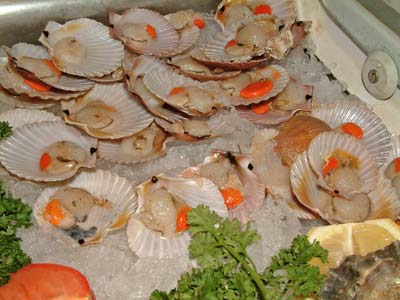
A large North Atlantic scallop fished of the American coast.
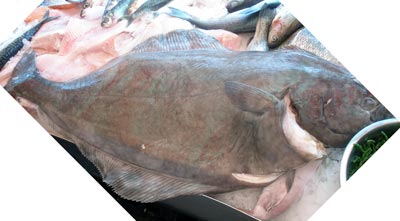
A variety of halibut (US: turbot) found off the eastern coast of North America, with lean white flesh and mild, sweet flavour. We walked a couple of times at Halibut Point in Massachusetts, a testament to the commonness of this fish.
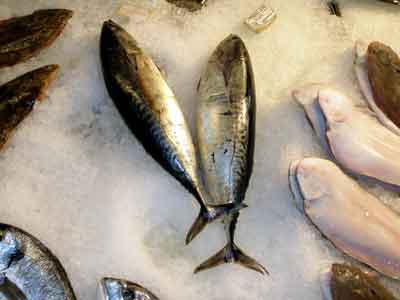
Little tunny. The little tunny is a handsome fish with black scribble patterns on its back. It has a robust, torpedo-shaped body built for powerful swimming and it has no swim bladder. The mouth is large, the lower jaw slightly protruding past the upper jaw. The flesh of the little tuna is darker and stronger tasting than that of the other large tunas. It is marketed fresh, dried, canned, smoked, or frozen. It is often caught on hook and line near reefs.

Little tunny. The little tunny is a handsome fish with black scribble patterns on its back. It has a robust, torpedo-shaped body built for powerful swimming and it has no swim bladder. The mouth is large, the lower jaw slightly protruding past the upper jaw. The flesh of the little tuna is darker and stronger tasting than that of the other large tunas. It is marketed fresh, dried, canned, smoked, or frozen. It is often caught on hook and line near reefs.
Atlantic rock oyster. A variety of oyster up to 15 cm (6") in length found on the American side of the Atlantic. Unlike many oysters this is usually cooked, served on the half shell. This is because it is quite a fatty oyster, particularly when large, which is improved by cooking. All down the eastern seaboard the Atlantic oyster is called after the area in which it is found, e.g. the Long Island oyster, Chesapeake Bay oysters and so on. The best known is probably the bluepoint.
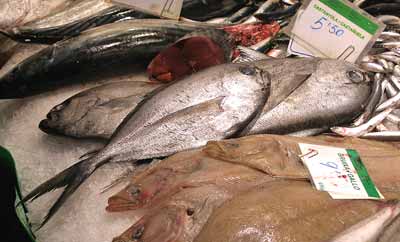
The Atlaay’s bream. A type of sea bream or porgy. Confusingly, in the US this is known as pomfret which, in the UK, is a quite different fish.
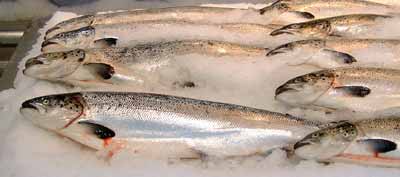
Wild Atlantic salmon with medium oily pink flesh and a mild flavour. It can weigh up to 18 kg (40 lb). It is often smoked. It is usually possible to tell the difference between wild and farmed salmon by looking for signs of wear on the tail.
Atlantic silverside or sandsmelt. A slender, round, oily marine fish which grows up to18 cm (7”). It is long with a translucent green back and silver bands lengthways along the sides and caught in estuaries along the coast of the eastern United States. It is usually deep-fried or grilled. In the United States these are often called whitebait. When tiny they are treated in the same way as whitebait in the UK.